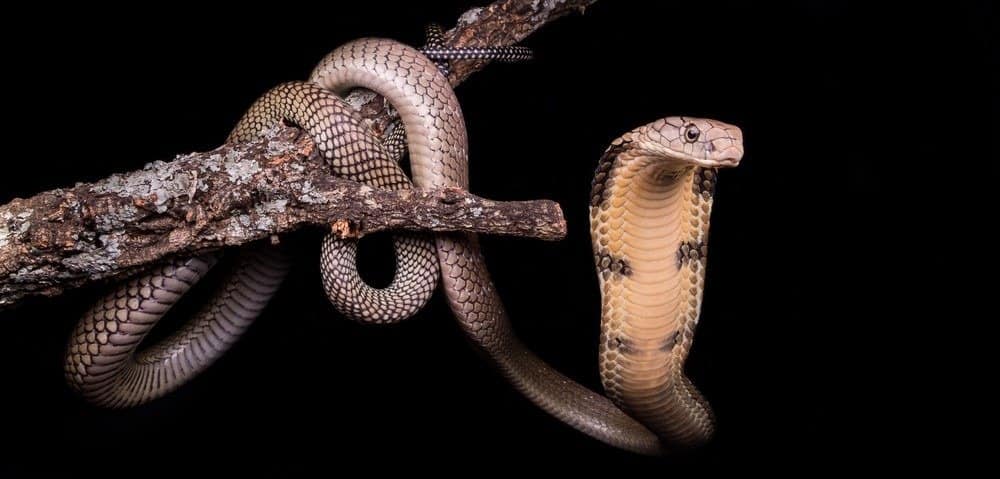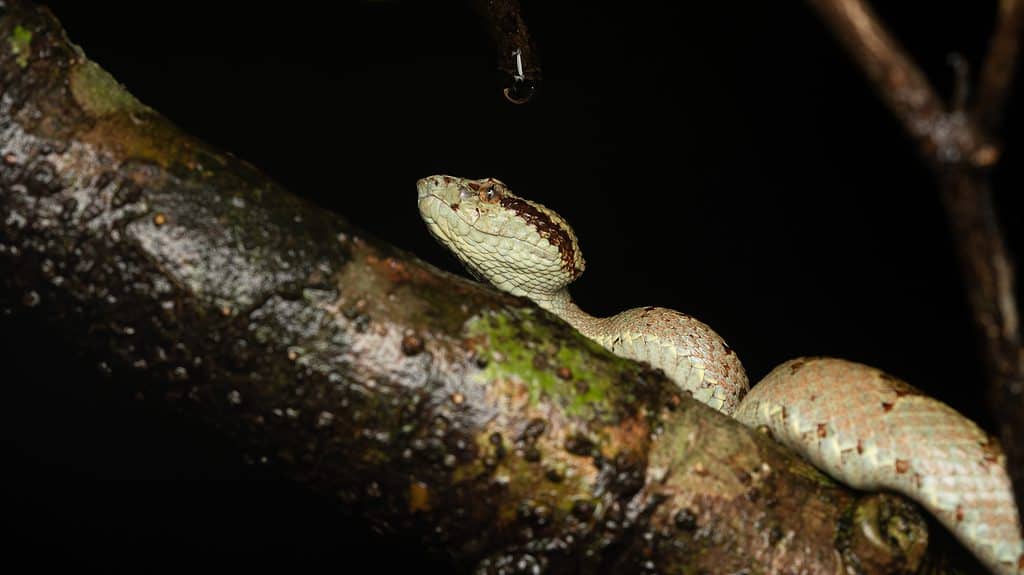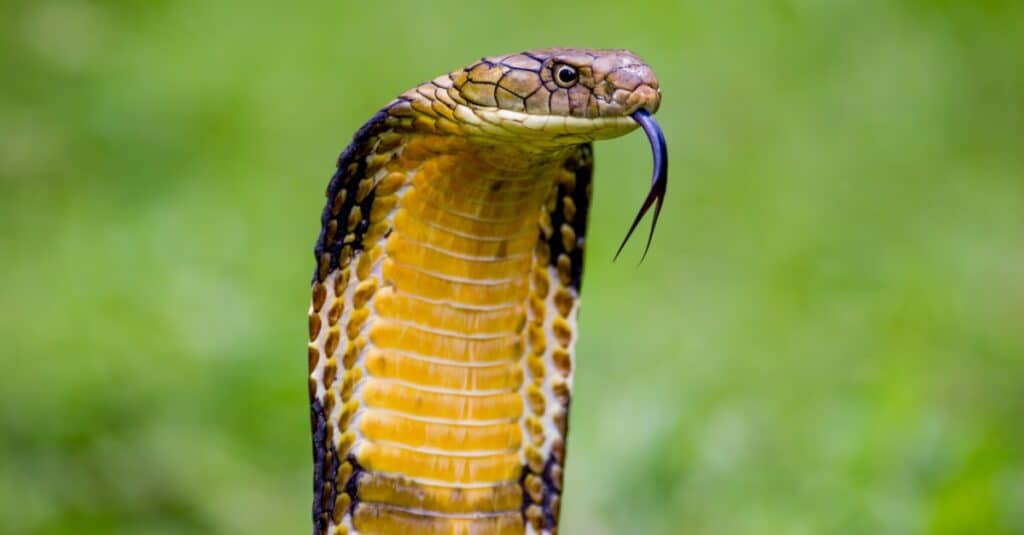Continue reading for our analysis...

It is well known that King Cobras preferred prey is other snakes but seeing one hunt in real life is something else! Watch this fascinating video and admire the technique of this predator!
Pit Vipers – A Highly Evolved Venomous Snake
Pit vipers are no pushovers! They range in size from snakes like the little massasauga (which grows up to about 30 inches) up to the huge bushmasters (which can reach 12 feet). The snake here is described as a Malabar pit viper which grows to around 41 inches.

Malabar pit vipers can grow to around 41 inches.
©Tushar Chindarkar/Shutterstock.com
They are all venomous but have different types of venom that contain different types and quantities of chemicals. Some venom is more dangerous than others.
However, they all have hollow fangs through which the venom is delivered to their victim. When they attack, they plunge their fangs into the prey and venom travels from the venom glands at the rear of their heads, through the fangs, and into the flesh of their chosen prey. Pit vipers are also themselves prey. They are hunted by other snakes including indigo snakes, king snakes, and, as we see here, the king cobra.
King Cobra Hunts a Pit Viper

The king cobra is the largest venomous snake in the world.
©mrjo/Shutterstock.com
The footage was published online by the King Cobra Conservancy project. Their mission is to “support ecological research and conservation initiatives aimed at determining the status of King cobras in the wild”. It was shot by volunteers at the ARRS King Cobra Telemetry in India in a 10-acre plot in a jungle clearing.
King cobras prefer habitats that include streams, forests, bamboo thickets, or swamps where they can reach up to 20 years of age. They are a very impressive snake. In fact, their venom is sufficient to kill an elephant so it is not surprising that this pit viper succumbs so easily. They are also unique snakes because they build a nest to lay their eggs in. King cobras are the largest venomous snake in the world and can grow up to 13 feet in length!
Is This Normal Behavior?
Yes, it is common for king cobras to eat other snakes. In fact, snakes are at the top of their food list, followed by lizards and sometimes small mammals like rodents and birds. If presented with the same type of snake as meals, king cobras may even develop a taste for a specific kind of snake, like Indian cobras or vipers, and seek those out.

Cobras commonly eat other snakes.
©Skynavin/Shutterstock.com
Another Amazing Animal Video You May Enjoy
When trying to protect themselves by staying home during the coronavirus pandemic, a South Carolina family has a formidable visitor. The family calls security to help remove the gator. Watch as Big George attacks the family’s firepit! The children inside the home scream, “Alligator!” as the parents and 4 security guards decide how to deal with the unwanted guest.
How Large Are Adult King Cobras?

The king cobra is the longest venomous snake.
©iStock.com/takeo1775
With average sizes ranging from 10 to 12 feet in length, the king cobra ranks as the longest venomous snake and is even capable of reaching 18 feet long. According to the Guinness World Record, the longest one on record was an astounding 18.8 feet!
Discover the "Monster" Snake 5X Bigger than an Anaconda
Every day A-Z Animals sends out some of the most incredible facts in the world from our free newsletter. Want to discover the 10 most beautiful snakes in the world, a "snake island" where you're never more than 3 feet from danger, or a "monster" snake 5X larger than an anaconda? Then sign up right now and you'll start receiving our daily newsletter absolutely free.
Thank you for reading! Have some feedback for us? Contact the AZ Animals editorial team.







